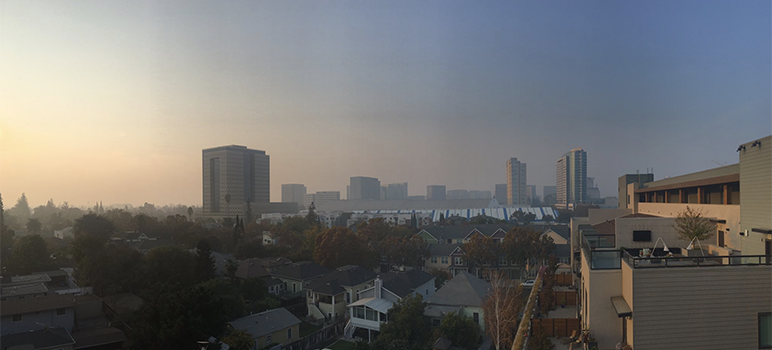The Bay Area Air Quality Management District has inappropriately—and against its own rules—placed air sensors literally on airport runways and in the parking lots of schools. This, of course, is geared towards issuing as many no-burn days as possible.
For the past 30 years, the Air District has waged a war against wood-burning fireplaces while allowing oil refineries to continue to operate without impunity in the Bay Area. As you probably know, they collect millions of dollars in fees and fines from these refineries and so it’s clear to see that this is not about clean air but, rather, an unregulated “special district” that can and does collect income in order to stay in business.
Santa Clara and the Northern Zone are supposedly triggering no-burn days today, Nov. 25. There are literally four sensors on the runways of small airports in Santa Clara and it’s clear that any air pollution reading at an airport will be higher than a residential neighborhood.
The Northern Zone has one single air sensor and it is located at Napa Valley College, an all-commuter school which is 100 yards downwind from a new housing project as well as Napa Pipe, a 900-home project; both projects have begun.
The Air District rules, as well as those of Cal-EPA, state that air sensors must be placed in residential neighborhoods. The Air District has requested exemptions from Cal-EPA in order to place them in non-residential areas and, at least the case of the one in Napa, they lied, according to documents I was able to find. The Napa sensor was previously located on top of a bakery, next to a barbecue joint, downwind from a pastry shop, and literally on Napa’s business road—Jefferson Street—and across from Napa High School where morning and afternoon traffic is always incredibly busy. Due to my complaints to Cal-EPA and the EPA in Washington, D.C., they were forced to move this air sensor but, unfortunately, placed it at Napa Valley College. As you can guess, complaints will be filed against this move.
My last point is about oil refineries. Everyone knows that they are the primary polluters in the Bay Area but the Air District is allowing them to stay. Each refinery pays a minimum of $5 million per year in permit fees to the Air District, plus each “incident” brings about a fine of at least $1 million. Without this income from the oil refineries, the Air District would not be able to maintain its employee roster of well over 200 employees, nor pay the guaranteed salary increases of over 3% per year—that does not take into account promotions and other pay raises. And it has no regulation—the board is a political joke since it is nothing more than a stepping stone for politicians who have higher political ambitions. Most of times, half of the board is not present at board meetings. Plus, it’s clear that the board is never told the full story.
How do I know all this? I used to work there.
Robert Morey lives in Napa.


1) I think the author means “with” impunity.
2) BAAQMD is all about serving the interests of BAAQMD.
3) It would be the height of hypocrisy to ban oil refineries while continuing to burn billions of gallons of gasoline.
Refineries pollute, sure – but they are not the “primary” polluter. It’s hard to take this article seriously because it appears there may be a grudge with the former employer.
Wait, what? A government agency lying and misleading about the environment? Our “government scientists“ falsifying data?
I am shocked to learn that there is gambling going on in this establishment.
Oh My!
Another government agency whose sole purpose is to collect money and power and increase cost and inflict damage and misery to the population. Let’s move those sensers to the Davos Switzerland airport and impound all those hi polluting jets of the rich and famous and their concubines.
Consider again the related politics, including in government.
Once again it’s no surprise.
As with air pollution, so it’s also possible with thermometers to boost a certain well-known alarmist hype, especially where combustion occurs and likely is increasing with population growth and activity. More traffic, flights, etc., including idling at many an intersection, don’t forget (for both air pollution and heat levels). I don’t believe that’s why there are few anti-idling laws being tried to date, but in theory even that could be to boost emissions and heat at prized cycle-failure heavily used intersections, they and the politics are so lowly. Seeking heat islands and even warmer parts of them, as with finding more pollution. If we had smokestacks and predictable plumes, yes, they would….
We should just be allowed home polluting permit fees like the refineries have or wealthy carbon offsest purchases. At the end of the day, a gas furnace and stove is far better than electric.
Thank you for sharing this insightful piece, Robert. I’m curious, given your firsthand experience with the Air District, what steps do you think residents can take to ensure air sensors are placed in more appropriate locations? Also, why do you believe the focus remains on wood-burning fireplaces instead of targeting the larger polluters, like the oil refineries? It seems like there’s a significant disconnect in priorities—how can this be addressed effectively?